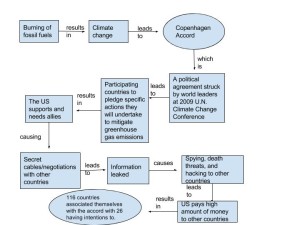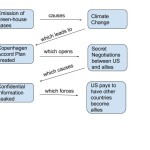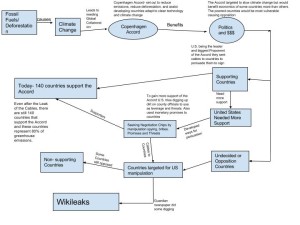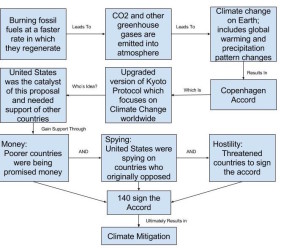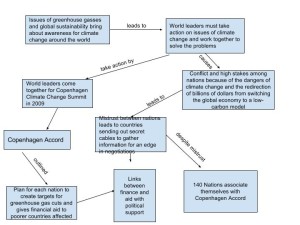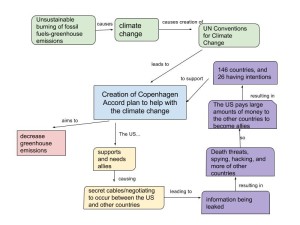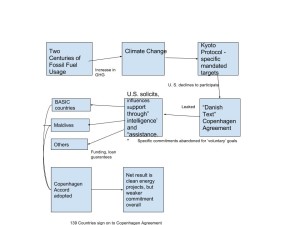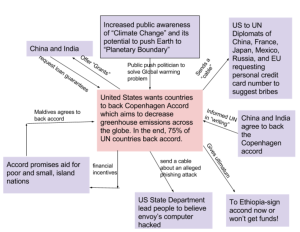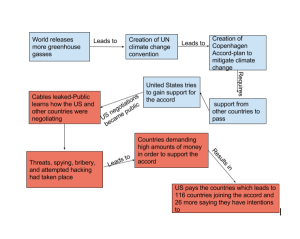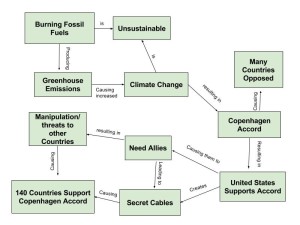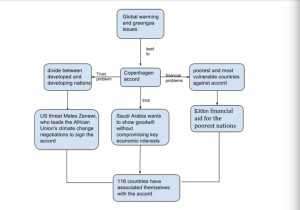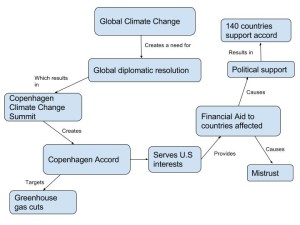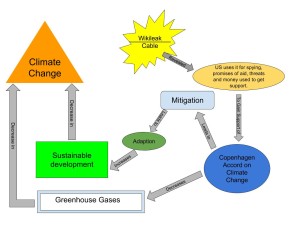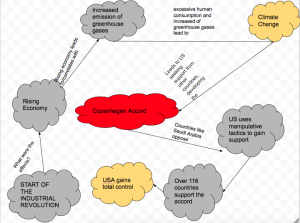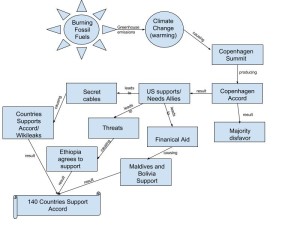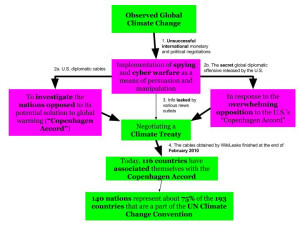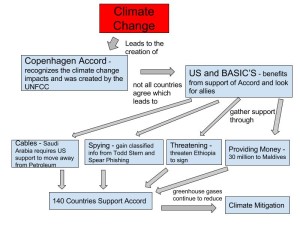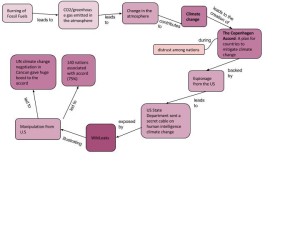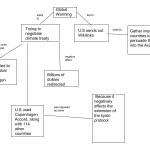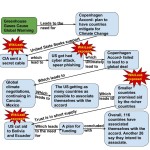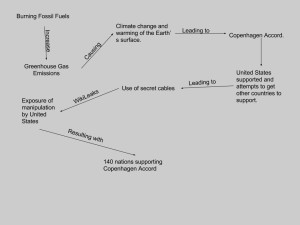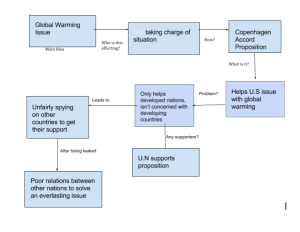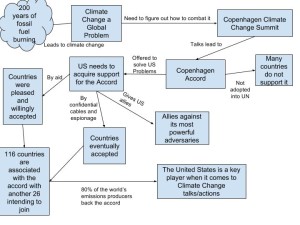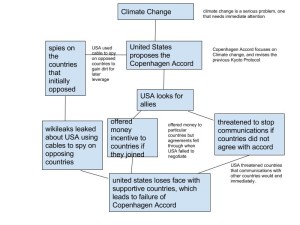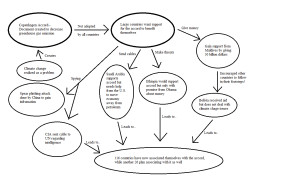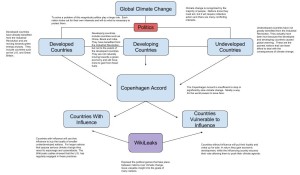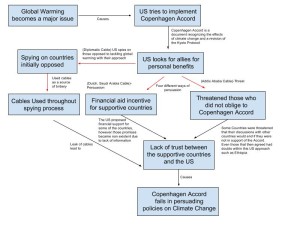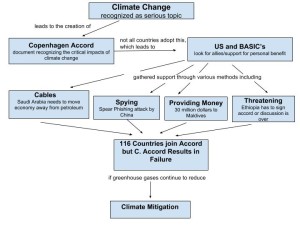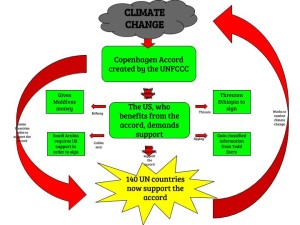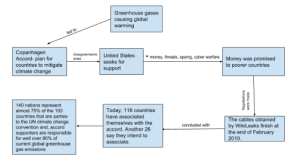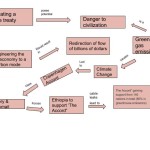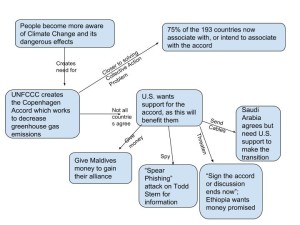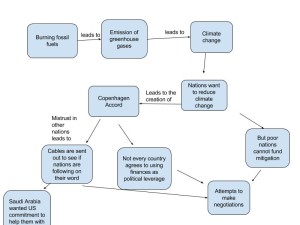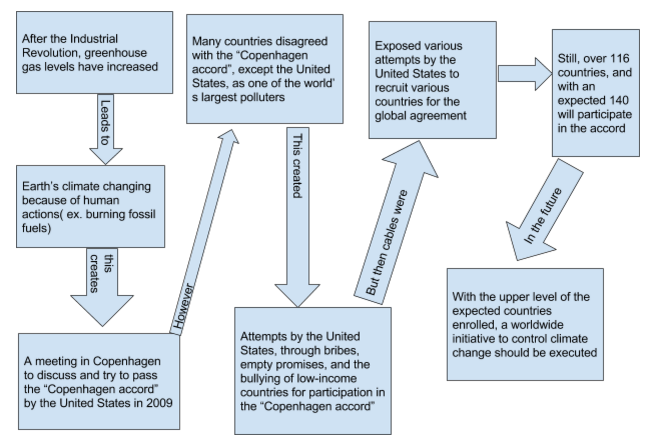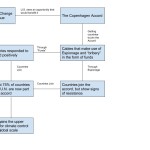In my diagram, I mainly focused on the interactions between the US and other countries involving the Copenhagen Accord. I first started off my diagram with the issue of climate change. The burning of fossil fuels and the releasing of greenhouse gas emissions contributed to climate change. There was not a plan to find ways to stop climate change, so the US created the Copenhagen Accord. Therefore, seeking negotiation chips, the US state department sent a secret cable in 2009 seeking help from UN diplomats across a range of issues, including climate change. In order to pass the Accord, the US needed to gain support from other countries. The US thought by spying, hacking, and sending death threats to other countries that they’ll gain their support. Their plans did not work. The communications of these bribes and threats were released to the public when the cables were released. The countries that were against the Accord, were upset with the ways the US were trying to negotiate. After the cables were released, other countries demanded the US to pay high amounts of money to gain their support. Therefore, the US paid the demanded money. This led to 116 countries associating themselves with the accord and also 26 others having intentions to. I personally think this wasn’t the best solution for decreasing climate change. I did not agree with how the US used threats and bribes to handle things. However, the Accord did make an impact and led to decrease in climate change.
There was a lot of information to take in after reading this article. Prior to reading this article, I have never heard of the WikiLeaks Cables and the problems that have occurred. Climate change is a very important topic and needs to be addressed in the right way in order to solve it. Human activities have contributed to climate change by adding CO2 and other heat trapping gases to the atmosphere. Climate change is already starting to transform life on Earth. As I stated before, I do not agree with some the methods the US used to get support from other countries. Threatening other countries is absolutely not the right way to go about things. I’m sure the US could have thought of different approaches to gain support and help other countries. For example, the US could have tried to convince other countries in favoring for the Accord or set up conferences with other countries and try to come to a conclusion together. The US did however raise awareness of how important climate change is and how it’s affecting Earth. In my opinion, I think the State Department Cables should have been publicized and notified to the public. As a person, you have the right to know what’s going on where you live. From module 4, the collection action problem was discussed. I believe this article falls under this problem. Collective action problems are widespread throughout environmental issues such as climate change. Climate change is a challenging collective action problem due to its massive scale.

